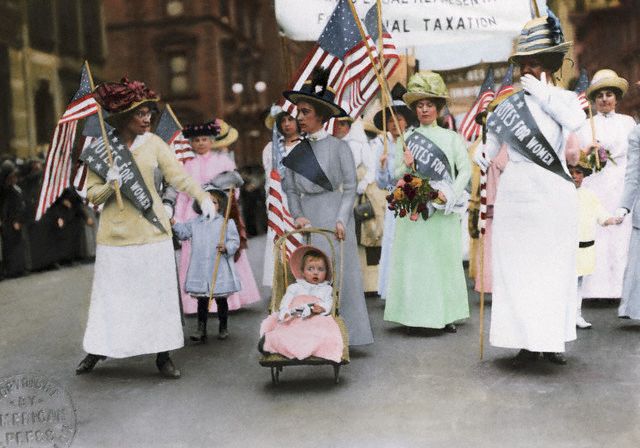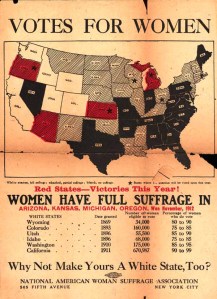History: Women's Suffrage

Women used rallies, parades, civil disobedience - whatever it took to get attention - in their efforts to gain the right to vote. This rally was in NYC in 1912. Uploaded by staff.harrisonburg.k12.va.us.
The people of the time were adamant – women couldn’t be given the right to vote. And why couldn’t they? Well, went the (masculine) reasoning, women are so frail, and may not even be able to handle the arduous task of getting to the polls. And they’re prone to hysteria, how could they possibly make rational choices? Not to mention how unqualified they are, how given to reaching rash or emotional conclusions.
Fortunately, there were strong women (and men) who saw through these and the other arguments that now seem bigoted. The movement began before the Civil War, and many of the women involved were also active in the abolitionist and temperance movements.
Many of the leaders are known to us: Susan B. Anthony, Elizabeth Cady Stanton, Alice Paul. But the century-long struggle involved thousands of women, in virtually every state, who didn’t give up their dream or compromise their principles.
Finally, on August 26, 1920, the 19th Amendment to the Constitution was ratified, granting American women the right to vote. Tennessee became the state that gave the amendment its required 3/4 of the states. And, odd as it now seems, Mississippi didn’t finally become the 50th state to ratify until 1984. That’s right, 1984. Mississippi, you must be so proud.
[youtube=http://www.youtube.com/watch?v=bK5jmbVU0_M]

